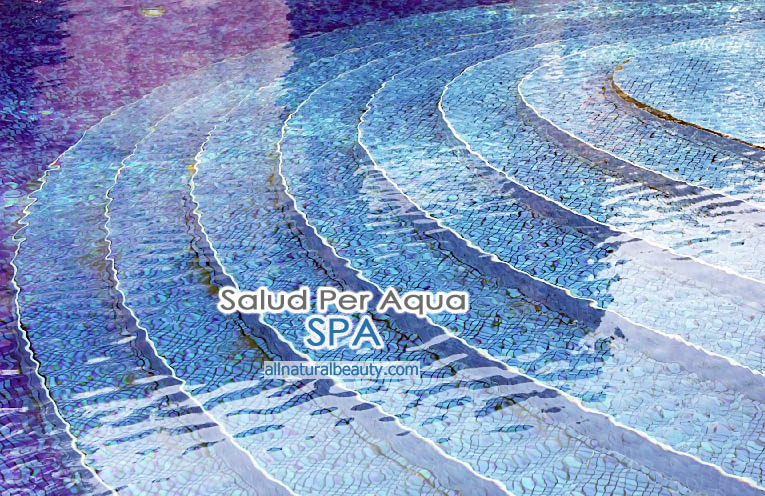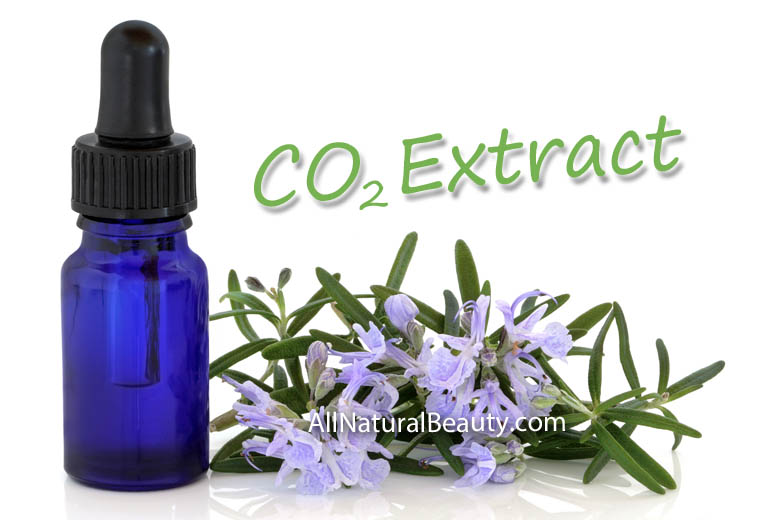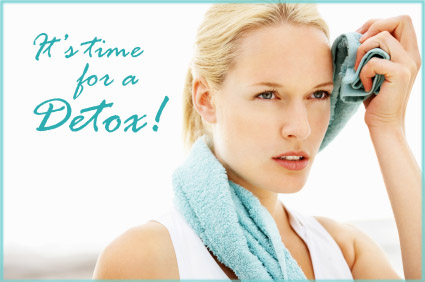
SPA at Home – Health Through Water
The importance of essential oils and hydrosols is not that they occur in products or product making or in the SPA, but the foundations of this work, herbalism and essential oil therapy, is to revive and restore one’s personal nature and well-being.
Our/your key words:
Detoxify ~ Purify ~ Rebuild
Recreate what happens in the womb via water/hydrosol/mineral water baths
Rejuvenate Relax Restore Revive
All creatures great and small go to SPAs or into water to be restored. This has been happening for tens of thousands of years. When we are overworked, stressed, exhausted, our skin starves for nutrients and hydration. The most important nutrient is the hydration of the skin through water/hydrosol.
A SPA as a place should be more than a destination point, it should also be considered a health center, a place to transform your life nurturing both mind and body by better eating habits and exercise as well as education. Mind/Body/Spirit – the integration of the whole..
The origin of the word SPA is Salud or Salve Per Aqua or “health through water”. This phrase was found in a Roman bath as an anonymous graffiti 2000 years ago. A Spa has one main ingredient and that is water.
Hydrotherapy, using water for healing, is an important part of any SPA philosophy. Some SPAs such as Rancho La Puerta are well-known for herbal wraps that use the local plants infused in hot mineral water, using linen cloths soaked in these herbal waters and then wrapped around the clients for various health benefits. The client is then wrapped in a rubberized sheet to contain the heat and allow the mineralized herbal water to penetrate the skin.
SPA is both an ancient body of knowledge as well as a place to regenerate and find harmony in nature. To make full use of a SPA, I believe that one should consider the water more, what type there is what type of minerals are in it naturally and using or making your own specialty soaps. Good herbal and aromatherapy soaps can be purchased from a company that makes handmade soap from herbs and essential oils. Such companies as Woodspirits and Sweet Violet make fabulous soaps and specialty spa treatment products. You can incorporate hydrosols into all the hydrotherapy treatments, scrubs and into the herbal wraps and into all skin care products and shampoos.
Fantastic Rosemary grows all over the world and provides many benefits. Local and dried herbs are also useful. These can all be distilled, particularly the Rosemary. Any local herb that is locally distilled will produce hydrosol and some essential oil. The best hydrosols are those that are locally grown from the correct type of plants, picked at the correct time for the best chemical components and distilled using a copper still or at least a copper gooseneck or condensing coil. Rosemary hydrosol is rejuvenative and anti-aging and can be added to many products and to many treatments, while the essential oil could be used in locally made soaps and skin-care products. Rosemary has a wonderful odor. It should be harvested just before or during full flowering (not after) for the most cineol content and least camphor and for the hydrosol it must be distilled when freshly picked. Good essential oil will also result.
Soap, locally made, is a wonderful addition to the home and in treatment areas. Rosemary soap, in particular, smells good and is invigorating. You can also have a soothing or relaxing soap by using the essential oil of Artemisia ludoviciana which is a good substitute for the more expensive Roman Chamomile. I believe that teaching local women quality soap-making skills will enhance and follow the mission of any Spa Project to help poor women and their families by teaching them new skills. The art of soap-making as well as how to set up a soap-making factory can be taught by many especially such a soap artist as Barbara Bobo of Woodspirits.
The hydrosols and aromatic oils that would be produced in local areas would be used in treatments and could be sold at the market, in the salons and the health centers. This in itself would be a wonderful addition to any Spa philosophy.
As a visitor to many a Spa over the last 30 years, I have listened to a variety of guests who have all made it very clear to me that if a spa produces a quality product they will buy it. It being anything in the product line that is wholesome and organic and that the guest has experienced at the Spa. They have always been particularly excited about hydrosols, especially the Rosemary hydrosol that I bring and demonstrate. Guests also mention that the soap available in the rooms should be special, should smell good and should be luscious and handmade. Good soap, mineral water and quality hydrosols are or should be always available at a top of the line Spa.
Herbal Wraps using water, herbs and linen are well-known treatments. SPAs should rethink their methods and return to the older system of group wrapping (lots of women in a large room together) in a heady steam-filled room that will enhance the process. The herbs that have been used in the past have been very herbaceous and heady with scent, the steam filled with scent and healing. Flowers can also be used in these ‘herbal’ wraps. Currently, spa’s seem to think that strongly scented herbs are not to be preferred. They also seem to prefer individual wrapping in a private room. This diminishes the over-all effect and reduces the amount of therapeutic herbal steam. A mineral water rinse before or after the herbal wrap or with your own hydrosols would be very cleansing to the skin.
Day Spas and week-long Spas should most certainly offer extensive water treatments, a more healing and nurturing environment and services where the Spa goer can completely unwind. Also a Spa should be free of the artificial, free of extraneous noise, free of nasty or chemical odors, it should de-stress, scents should be plant-based and natural, soft music or no music with natural sounds predominating are best. Scent is used to relax the person and decrease the amount of pain sensation while one would use medication to sedate a person; sound, especially nature’s sound or good music (not necessarily NewAge) helps clients think more clearly.
Many of these Spa treatments can be made and used at home, in the company of friends or simply by yourself.
SPA Formulas
BATHS – See individual listings for different baths. A simple bath is the infused herbs of any fresh ones that you have available with 10 drops complimentary essential oils. i.e. Citrus peels infusion plus citrus and Patchouli [1 drop each Grapefruit, Lemon, Orange, 3 of Neroli + 4 drops Patchouli].
DEEP SPA BATHS or HOME BATHING with Hydrosols – Hydrosols in the bath water will keep your skin young and beautiful looking. They are anti-aging.
– Run a deep bath. Add herbs or not, add 4 oz of any hydrosol, add milk, add anything. Soak for at least 20 minutes. Try to air dry. Then dress. Here are some hydrosols to use and what they can be used for –
Lavender Hydrosol is gentle, balancing, a toner, anti-inflammatory, cooling to the skin, hydrating and great for all skin types, especially oily and sensitive skin.
Lemon Balm Hydrosol is anti-viral and can be used for herpes or as an antifungal. Use it in the bath, the foot bath for athletes foot or for a child’s bath. One ounce in a child’s bath is plenty.
Rose Geranium Hydrosol is the consummate bathing hydrosol. It smells good and regenerates the skin while it ‘balances’ the oil glands. It is good for dry skin, men love it in the bath and it even is good for bathing dogs.
Rosemary Hydrosol is the anti-aging hydrosol. Drink it, bathe in it, use the herb, use the hydrosol, use the essential oil and use all combinations of these for a variety of herbal/aromatic anti-aging delights. If you use it to wash your hair, it makes the hair so strong that it will be difficult to color or perm.
Witch Hazel Hydrosol is astringent, has little to no odor and heals all sorts of skin problems.
Hydrosol Spray/Tonic Drinks/Hydrosol Bath –
Hydrosols: These are the natural products of specialized distillation. They contain all the natural plant-based properties and nutrients as well as the small therapeutic micro-drops of essential oil. Hydrosols are mildly acidic, about 5.5 which is the same pH as the skin. [if the pH is more than this, then you probably bought water and it isn’t a true hydrosol] Hydrosols can be used as facial sprays, in all your water-based products, in drinking waters as a tonic, in baths, compresses, poultices, creams, lotions, foot baths, foods, etc. Just add them to everything, one tablespoon to drinks up to 4 ounces to the bath.
Mud Baths –
Umm! – I love mud baths, volcanic ash baths, Moor mud baths. Mud baths as they are done in various SPAs of the world such as those that exist in Calistoga, CA, can only be taken on site. One of the best in Calistoga is Indian Springs Spa (707/942-4913) which uses only the natural volcanic ash that is dug from the ground where it was deposited ages ago. Relaxing in a mud bath is detoxifying, healing, pain-relieving and cleansing to mind/body/spirit.
In the home spa, you might try Moor Mud made from the natural Moor Peat from the Neydharting Spa of Austria. Moor is the result of the slow decomposition over thousands of years of 1,000 herbs, plants and flowers that were nurtured by glacial waters and pure air and sunlight. The pH is mildly acidic like human skin. It is a remarkable substance with many therapeutic properties. It can improve the skin, aid in weight loss and breakdown of cellulite. Moor baths are also helpful for people who have trouble sleeping or who have chronic pain. It is available in 35 oz containers, just enough for 7 – 5 oz baths taken on alternate evenings as a detoxifying agent. One should take 21 of these baths (42 days) for a complete treatment.
There are many types of mud baths, mud treatments. These include the Moor Bath and the volcanic ash treatments already mentioned as well as the various cold and hot treatments using the healing force of natural peat. Muds can be used in full-body baths, in full-body or partial applications, compresses with other herbs and hydrosols as well and in face masks, in baths with salts, milks, whey or with cream applications.
Salt Baths –
Salt baths are the easiest to take. Precede the salt bath with a salt scrub. Stand on a towel outside of the tub and using handfuls of salt to exfoliate the skin gently scrub the skin – from neck to waist and from toes to neck; always moving your hands in a circular rotation. If pure salt is too gritty, mix it 1~1 with oil (Olive or Almond). Concentrate on the knuckles, elbows, knees, feet, and fatty parts such as the love handles and butt. Run a hot bath. Add 1 cup each of sea salt, baking soda and epsom salts. Get in and soak for 15 minutes. Rinse. Air dry. Wrap yourself in a big fluffy towel, lay in the sun or take a rest in warmed blankets. This may be followed by a massage or blanket wrap.
Scented Salt Baths – To every pound of mixed salts, add 5-10 drops of your essential oil mixture. Mix it together thoroughly, let it age at least two weeks before using. For a real salt bath, use the entire pound of scented salt per each bath. There are many excellent mixtures of essential oils that one can use in the scented bath, check out table 1 and 2 of either The Herbal Body Book or The Aromatherapy Book for some good ideas. The citrus oils are a particularly good choice.
Seawater Bath or Seaweed Bath –
I have taken a variety of baths using fresh and dried seaweed. Since fresh seaweed harbors millions of tiny creatures, my suggestion is to only use dried Seaweeds with no creatures. Use a Seaweed that doesn’t break up like Dulce or giant Kelp. Simply put a dried piece in your bath, add rubber duckies and cute play toys, watch the Seaweed grow and expand in the water until it gently unfurls and wraps around your body. Turn out the lights and contemplate the great oceans of the world. You can also collect gallons of seawater from the ocean, bring it home and add to your bath.
A favorite formula is to take 1 oz each of Dulce, Bladderwrack and Irish Moss and add to your bathtub along with 1 cup of seasalt. Have a nice soak. Rub your body all over with a pumice stone or with the inside of an Avocado peel. This will exfoliate off the dead skin. After 20 minutes, have a rinse, wrap in a big linen towel and give yourself a facial or foot massage with gentle herbal oils.
Soap-
Hand made, hand-crafted aromatherapy soaps are the best way to incorporate an aromatherapy treatment into your daily schedule. A good crafted soap retains all the glycerin, does not dry the skin, moisturizes, and uses pure essential oils not fragrance for scent and therapy. A soap formula should use about 8 oz essential oil/32 pounds of soap. This is approximately 1 drop per personal application and is a truly therapeutic aromatic treatment. There are many choices and many producers. My favorite soaps are listed at the end of this article.
Water/Herbal Wraps –
Herbal wraps are used to help detoxify the body, reduce water weight and for cleansing. My favorites use heavy old-fashioned linen sheets rather than cotton sheets.
The wrap in its simplest form is used as follows: The sheets are dipped into an herbal infusion using any herbs that grow nearby or that can be obtained. The sheets are then wrung out using a wringer and then while still hot wrapped around a person. The person is then covered with a water-proof sheet and then swaddled with blankets.
There are some fine points. The best herbs are fresh or freshly picked and would include wild Sage, Camomile, Lavender. A communal room is best where 5-10 women are being wrapped at the same time. This contains the steam and keeps the room steamy and cozy. The tables/beds should be hip high as a comfort to the attendant. A medium firm 3-5 inch mattress is used, covered with a rubberized cover and then a water-proof sheet. The hot herbal sheets are laid on this base, then the person, then the sheets are brought up and around the person. Two-three hot sheets are used per person.
After the 20 minute hot herbal wrap, the woman puts on her thick terry cloth robe and goes to the cool down room where she is wrapped in a warm blanket for 20 minutes and allowed to rest and cool down. During the wrap process, cold Cucumber slices or cool Camomile tea bags are placed on the eyes, and mineralized water is given to drink.
The water used is the most important part of the process and should be clean and pure. Hydrosols can be sprayed on the woman before the wrap, as well as after the wrap for a refreshing change.
SIMPLIFIED RECIPES:
Clay Mask: To make a clay mask or pack: simply take a bit of clay (1 t.), add water/hydrosol, enough to mix using a non-metal mixer or your finger and apply. Let it dry and then remove with plenty of water and a spray of hydrosol.
Sugar Scrub: EXTERNAL MASSAGE: Standing in the bathtub, rub yourself all over with Sugar Scrub.
70% by weight sugar, gritty sugar like Turbinado
30% by weight oil such as Calendula Infused oil or any vegetable oil.
2% by weight of essential oils
This translates to 2-1/2 oz or 1/3 cup of a nice gritty sugar like Turbinado
1 oz by volume of oil
25 drops of essential oil blend (I have used 12 d. Lemon + 12 d. Grapefruit)
Water/Herbal Wraps: Use 1 lb. of herbs to 5 gallons of water. An easy way to make the hot herbal infusion is to add the herbs to a mesh laundry bag, add the hottest water from the tap, put it through a short cycle without a rinse cycle to get a strong infusion. Add the sheets at the end of the wash cycle for 3 minutes and then wring the sheets through a hand wringer. Then the herbal infusion can be used again for the next set of sheets.
AUTHOR:
Jeanne Rose has been teaching, researching and using natural remedies for 33 years, beginning with her first book, Herbs & Things, now in it’s second edition. Sixteen books followed this seminal work. To get in touch, to purchase the books, to understand aromatherapy, herbalism, hydrosols and essential oils, to sign up for the in-person Seminars with Jeanne Rose, visit her website at www.jeannerose.net. Jeanne Rose also teaches a distance learning program, home-study courses both in Herbalism and Aromatherapy. She is Executive Director of the Aromatic Plant Project and can be reached at info@hydrosols.net. You may also call 415/564-6785 for a catalog and calendar of events.
SOURCES:
Hydrosols: Aromatic Plant Project – 415/564-6785 or Kneading Wellness – 717/626-8182
Moor Mud: Available at many places, here’s one – 604/878-0812 and fax 604/228-1827
Soaps: There are many handcrafted soaps available. Try some from your local health food store.
REFERENCE:
Rose, Jeanne, 375 Essential Oils and Hydrosols, Herbal Library, 1999
________, The Aromatherapy Book, Applications & Inhalations. North Atlantic. 1998
________, Herbal Body Book, Frog, Berkeley, CA 2000
________, Herbs & Things, Last Gasp, San Francisco, CA 2001
________, Kitchen Cosmetics, Frog, Berkeley, CA 1976
The above mentioned books can be purchased through www.JeanneRose.net or Aromatic Plant Project 415/564-6785
Call Institute of Aromatic Studies, 219 Carl St., San Francisco, CA 94117:
This article is used by permission from Jeanne Rose
- Education
- Books
- Courses
Ms. Rose is the author of over 20 books, including Herbs & Things, The Herbal Body Book, The Aromatherapy Book, and Jeanne Rose’s Herbal Guide to Food, and she has taught herbs, aromatherapy and distillation extensively throughout the U.S. She organized and was President of the first large Aromatherapy organization in the United States, NAHA, and speaks widely at many other events and conferences. She teaches distillation techniques for quality essential oils throughout various parts of the world. The word, ‘hydrosol’ as used for the waters of distillation, was first used and put in place by Jeanne Rose in 1990.

Aromatherapy Classes,
Certification Weekends and Seminars
taught in person by Jeanne Rose
ENROLL NOW – Visit http://jeannerose.net/calendar.html
or call 415-564-6337 or email aromaticplant@yahoo.com
Enrollment limited.
Seminars are valid for 15 CE and towards Practitioner Certification

Jeanne Rose is the author of 22 books on herbs and aromatherapy. Most recently, Jeanne authored “375 Essential Oils & Hydrosols” which is a complete reference book of 375 aromatic plant extracts and hydrosols with phytochemical, clinical and botanical indices.
She has released several booklets since 2006.

Jeanne Rose is the Director of the Institute of Aromatic Studies, principal tutor of both the Herbal Studies Course© and the Aromatherapy Studies Course – Practitioner© by Distance-study and Aromatherapy Course by home-study.
Learn more about the 3 types of home studies courses:
The Aromatherapy Course
– Home and Family©
AROMATHERAPY STUDIES COURSE©
– Practitioner
HERBAL STUDIES COURSE©
Ms. Rose is the author of over 20 books, including Herbs & Things, The Herbal Body Book, The Aromatherapy Book, and Jeanne Rose’s Herbal Guide to Food, and she has taught herbs, aromatherapy and distillation extensively throughout the U.S. She organized and was President of the first large Aromatherapy organization in the United States, NAHA, and speaks widely at many other events and conferences. She teaches distillation techniques for quality essential oils throughout various parts of the world. The word, ‘hydrosol’ as used for the waters of distillation, was first used and put in place by Jeanne Rose in 1990.


















